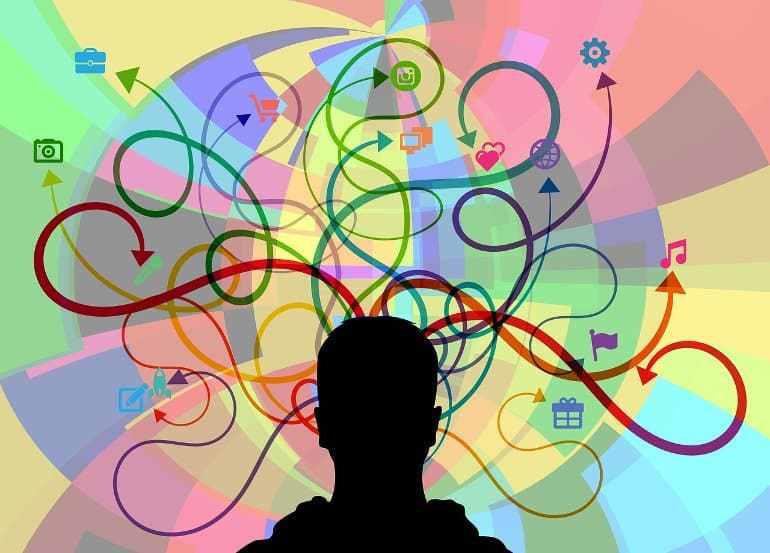How Does The Brain Make Decisions?
The study - conducted in mice and led by neuroscientists at Harvard Medical School - is the first to combine structural, functional, and behavioral analyses to explore how neuron-to-neuron connections support decision-making. Findings appeared on Wednesday in Nature.
“How the brain is organized to help make decisions is a big, fundamental question, and the neural circuitry - how neurons are connected to one another - in brain areas that are important for decision-making isn't well understood,” said Wei-Chung Allen Lee, associate professor of neurobiology in the Blavatnik Institute at HMS and professor of neurology at Boston Children's Hospital. Lee is co-senior author on the paper with Christopher Harvey, professor of neurobiology at HMS, and Stefano Panzeri, professor at University Medical Center Hamburg-Eppendorf.
In the research, mice were tasked with choosing which way to go in a maze to find a reward. The researchers found that a mouse's decision to go left or right activated sequential groups of neurons, culminating in the suppression of neurons linked to the opposite choice.
These specific connections between groups of neurons may help sculpt decisions by shutting down neural pathways for alternative options, Lee said.
A fruitful collaboration is born
It was a chance meeting on a bench outside their building during a fire drill that led Harvey and Lee to realize the complementary nature of their work. On that day, they forged a collaboration that propelled the new work.
The Harvey lab uses mice to study behavioral and functional aspects of decision-making. Typical experiments involve placing a mouse in a virtual reality maze and recording neural activity as it makes decisions. Such experiments have shown that distinct, but intermingled, sets of neurons fire when an animal chooses left versus right.
Lee works in a new field of neuroscience called connectomics, which aims to comprehensively map connections between neurons in the brain. The goal, he said, is to figure out“which neurons are talking to each other, and how neurons are organized into networks.”
By combining their expertise, Harvey and Lee were able to delve deeper into the different types of neurons involved in decision-making and how these neurons are connected.
Choosing a direction
The new study focused on a region of the brain called the posterior parietal cortex - what Lee describes as an“integrative hub” that receives and processes information gathered by multiple senses to help animals make decisions.
“We were interested in understanding how neural dynamics arise in this brain area that is important for navigational decision-making,” Lee said.“We're looking for rules of connectivity - simple principles that provide a foundation for the brain's computations as it makes decisions.”
The Harvey lab recorded neural activity as mice ran a T-shaped maze in virtual reality. A cue, which happened several seconds beforehand, indicated to the mice whether a reward would be in the left or right arm of the T. The Lee lab used powerful microscopes to map the structural connections between the same neurons recorded during the maze task.
By combining modalities, the researchers distinguished excitatory neurons - those that activate other cells - from inhibitory neurons, which suppress other cells. They found that a specific set of excitatory neurons fired when a mouse decided to turn right, and these“right-turn” neurons activated a set of inhibitory neurons that curbed activity in“left-turn” neurons. The opposite was true when a mouse decided to turn left.
“As the animal is expressing one choice, the wiring of the neuronal circuit may help stabilize that choice by suppressing other choices,” Lee said.“This could be a mechanism that helps an animal maintain a decision and prevents 'changes of mind'.”
The findings need to be confirmed in humans, although Lee expects that there is some conservation across species. The researchers see many directions for future research. One is exploring the connections between neurons involved in decision-making in other brain regions. We used these combined experimental techniques to find one rule of connectivity, and now we want to find others,” Lee said.

Legal Disclaimer:
MENAFN provides the
information “as is” without warranty of any kind. We do not accept
any responsibility or liability for the accuracy, content, images,
videos, licenses, completeness, legality, or reliability of the information
contained in this article. If you have any complaints or copyright
issues related to this article, kindly contact the provider above.
Most popular stories
Market Research

- Japan Ultrasound Devices Market Size Worth USD 887.0 Million By 2033 CAGR Of 5.4%
- Ecosync & Carboncore Launch Full Stages Refi Infrastructure Linking Carbon Credits With Web3
- Latin America Mobile Payment Market To Hit USD 1,688.0 Billion By 2033
- United States Lubricants Market Growth Opportunities & Share Dynamics 20252033
- Japan Smart Cities Market Size Is Expected To Reach USD 286.6 Billion By 2033 CAGR: 14.6%
- Blackrock Becomes The Second-Largest Shareholder Of Freedom Holding Corp.






















Comments
No comment